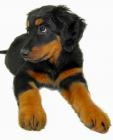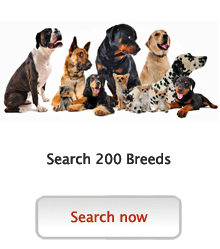Hovawart
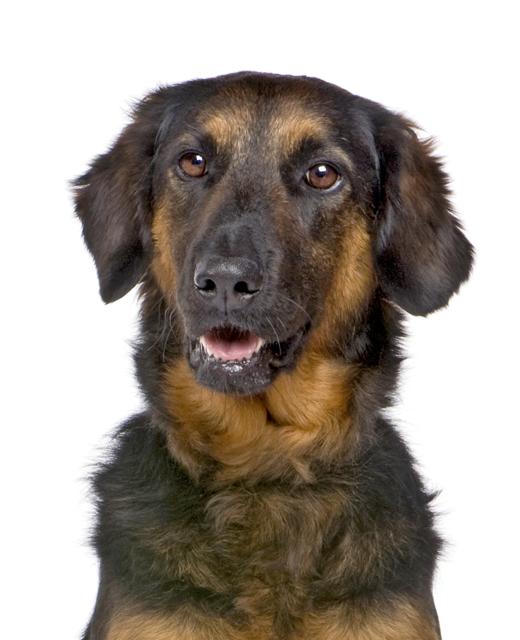
In my own words
I’ve been confused before as a cross between a German Shepard and a Retriever due to my colourings, size and coat. My temperament can also be seen in both breeds, as I am a family dog, a protective watchdog, which also loves to play in water and retrieve and chase balls. But I am my own, quite rare type of breed that originated in Germany, and like the GSD I was originally used to guard and protect my territory and herd my farms flocks. I’m a very loyal and devoted companion, affectionate towards every member of the family but I do have a tendency to be a one-person dog. Even though I was traditionally bred for my stability and kindness, I’ve been able to retain my alertness, my self- confidence and my very protective instincts of my forebears. I take all my duties extremely seriously and not given any job to fulfill I do have a tendency to become depressed. Unlike other breeds my hard - wired instinct to protect my home enforces me not to roam or flee far from my patch and master. To be by your side, to be able to work for you or alongside you and to be able to run will keep me happy and balanced and your best friend for life.
My ideal owner(s)
Experienced
Farmers
Outdoor types
Families
What they say about me
Even temperament
Loyal
Self-assured
Courageous
Tolerant
Composed
Agile
Kind
Is this Hovawart for you?
Test your knowledge about the Hovawart
Information essential about the Hovawart
Breed Group: Working
SIZE
Height; Dogs 63-70 cm. Bitches 58-65 cm.
Weight; Dogs 35-45 kg. Bitches 28-35 kg.
Popularity:
The Second World War put an end to breeding and great numbers were lost or killed. However, in 1947 the remnants of enthusiasts of the Hovawart joined together and the German Hovawart Club was formed. Hovawarts first appeared in the UK in 1980 and their numbers have increased slowly, numbers currently being about 310. A breed club was formed in 1982 and holds full Kennel Club recognition. The Hovawart is a popular breed within Germany but very rare in the United States. These dogs were recognized by the German Kennel Club in 1937 and are ideal for tracking, guarding and avalanche rescue
Breed History:
An old breed from the Harz and Black Forest regions of Germany, Hovawarts were used and bred by the Barons of Germany as reliable watch dogs and guardians of the flocks, castles and farms. Records of dogs of this type date as far back as the 1200s. Although the Hovawart is of very old ancestry, he did not survive as a breed but more as a type and his resurrection was due to the breed's modern day founder, zoologist Dr. K. Konig, who began his work shortly after the First World War. The breed finally came about after a few breeders crossed the likes of the old German Shepherd dogs, the Kuvacz, Newfoundland’s, Leon Berger cross Bernese Mountain dogs and an African Hunting dog. In 1922 the first litter was registered in Germany.
Character:
Hovawarts are hardy dogs, insured to all weather, intrepid, watchful, agile, not nervous, affectionate, intelligent and naturally obedient they retain their lively good natured puppyhood until they are at least two years old. They have quick and enquiring minds and need the minimum of a garden to keep them occupied. A lot of mental exercise is recommended and socialisation in puppyhood is essential. It’s a great watchdog and protector, but also a restless playmate and friend of a family. Hovawart is a big, strong and fast dog with good breed qualities. It’s an intelligent family dog, which is fond of every family member and shows respect for pets. It suites well for families with kids, if the kids don’t tease the dog. Hovawart’s are independent and could get dominant, hence it needs training. It can be used as trace dog, rescue dog, guardian and for defensive purposes. He rarely barks, but when he does it is loud and deep! The Breed Standard describes them as "Versatile, companion and working dog. Adaptable, devoted, self-confident, agile and resilient." The Hovawart is a calm and even-tempered breed and is extremely gentle and affectionate. Traditionally bred for stability of temperament he is a kindly, docile dog but retains the alertness, self-confidence, and protective instincts of his forebears. He will take his guarding duties seriously and his hard-wired instinct to protect the home means that he is less likely than many other breeds to hunt and roam. His love of human company means that he is not a dog suited to life in a kennel with little interaction with his people. A Hovawart wants to be by your side and it is not difficult to include him, as a real part of the family as the breed, for all its liveliness and love of exercise, is a remarkably quiet and calm housedog.
Temperament:
Their most important asset is their stable temperament. They are and should remain a family dog or working companion and are certainly not suited to a kennel life. Not quarrelsome or possessive but of great courage and faithfulness, they are not easily excitable and are usually dignified in manner. However, if roused Hovawarts will defend themselves with all that they have. They can be willful and dominant towards other dogs but are not easily provoked. The Hovawart was and still is bred to be a reliable companion for all kinds of work, be it the guardian of the property, agility, working trials, rescue, etc. They love above all to do something with or for their owner. Finally a Hovawart is a friendly dog that does not forget his friends or his enemies - once a friend, always a friend, in the mind of a Hovawart!
The Hovawart is loyal to the family but with the tendency to become strictly devoted to one person. It is excellent with children when it is well socialized with them at an early age. Remaining playful and puppy-like in its old age. It is good-natured, even-tempered and demanding of itself.
It is reserved with strangers. It makes a good watchdog; it is brave, protective, and alert. It will protect your property against intruders with great passion. This breed needs an experienced master; you can reach the best results with extremely consistent, loving and well-balanced training. It may be aggressive with same sex dogs but does well with non-canine pets in the household if it is socialized with them from puppyhood. Some strains are prone to fear biting, and others may be rather timid. It is calm at home, but energetic outdoors.
Conformation:
The translation of his name already tells one the most important task the Hovawart had to fulfill that of "guardian of the property". The Hovawart belongs to a very old group of working dogs that were found all over the middle European and Mediterranean countries whose task it was to guard his master's family and property against human and animal aggressors. Therefore he had to be of medium height, strong rather than fast, as his task was supervising and controlling not herding. He had to do this independently so he needed a good measure of self-reliance and a good sense of discrimination. The Hovawart is a naturally beautiful dog and no part of him is exaggerated. Three colours are permitted: Blonde, Black and Black and Gold. All colours can occur in the same litter depending on the colours of the ancestors. Hovawarts are medium sized, impressive but not heavy, with drop ears and a longish coat. Dogs and bitches are visibly different in their appearance and size. Their most important asset is a stable character and temperament, displaying playfulness, curiosity, fearlessness and the desire to chase. The Hovawart is, and should remain a family dog and companion; a sociable faithful companion that wants to be by your side. One of the features which makes the Hovawart stand out from virtually any other breed, is the fact that from the start his character, temperament and health was more important than his looks. Hovawarts are an intelligent independent being, with a mind of their own, stemming from the time when they had to make all the decisions themselves. Hovawarts today can still think for themselves. The Hovawart can be willful and dominant, understanding dominance and aggression will help owners integrate a new pup into their household. Your Hovawart will have a quick and enquiring mind and needs at least a garden to keep him occupied. Forms of mental exercise and obedience classes are recommended. His willingness and quickness to learn are impressive.
Colour:
Blonde, Black and Black and Gold
Training:
The Hovawart matures very slowly, but they do not require any special training. They do need a thorough socialisation or education; the puppy and young dog are uncomplicated, they are very inquisitive and very social with people and other dogs. As they are slow to mature your approach to all training must be consistent and full of fun for the dog. Let them enjoy their youth concentrating on the basics of obedience, and possibly tracking for the first year of their life, and train only through willingness and play. Later you can begin with more specific and difficult training, but be very careful not to apply pressure to learn too early, keeping sessions short and positive
Care:
This breed has average demand for exercise and usually adapt themselves to the family activities for a lot of their exercise needs. The Hovawart enjoys long walks, hikes and playing and they usually stay playful up until old age. They are not suitable for apartment living and should at least have a medium-sized backyard. Hovawarts don't need a great deal of grooming, despite their longish coats. Periodic brushing and combing is adequate to keep the coat tangle-free and remove the loose hairs. These dogs are average shedders.
Health:
This is a very healthy breed. However an under active thyroid is wide spread in European lines; hip dysplasia is present in the breed; however, stringent breeding practices have kept this debilitating disease to a minimum. To minimize the risk of your Hovawart developing any hereditary health issues, you should buy a dog from a reputable breeder.
You may also like:
If you like Hovawarts, you may be interested in breeds of the same size »
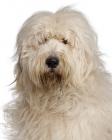
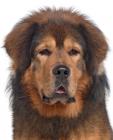
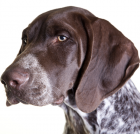
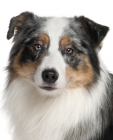
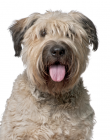
If you like Hovawarts, you may like other breeds with similar characteristics »
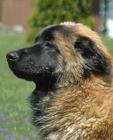
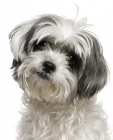
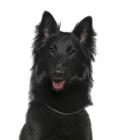
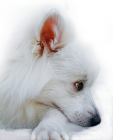
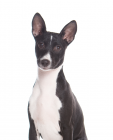
If you like Hovawarts, you may be interested in these other working dogs »
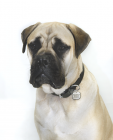
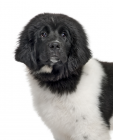
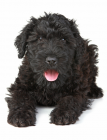
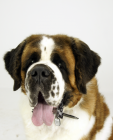
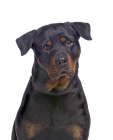
Advice on choosing your breed »
Find an animal shelter or rescue home where a Hovawart is waiting for a new home »
The Hovawart’s original task meant that they needed to make decisions for themselves and this trait remains. It is therefore important that the dog has a strong and respected leader whom he trusts to make decisions, if not he may, perhaps unwisely, exercise his own judgment. This is very much a working breed, which needs a job to do in order to remain fit and happy. Because of their inherent strong-willed nature, their guarding instinct, and their extreme intelligence this may not be the ideal breed for first time owners. This is a very energetic breed requiring a considerable amount of exercise. Regular, long daily walks with the opportunity for off-lead running and play will keep the Hovawart fit and mentally active. So be prepared for this in order to allow your dog to be happy and well balanced.
Be the first to rate this breed »
|
*PLEASE NOTE: All our breed profiles are general, and all dogs are individuals. Always talk to the breeders and meet the owners you are buying from. Try to meet the dog and its parents if it is a puppy in their home environment.









